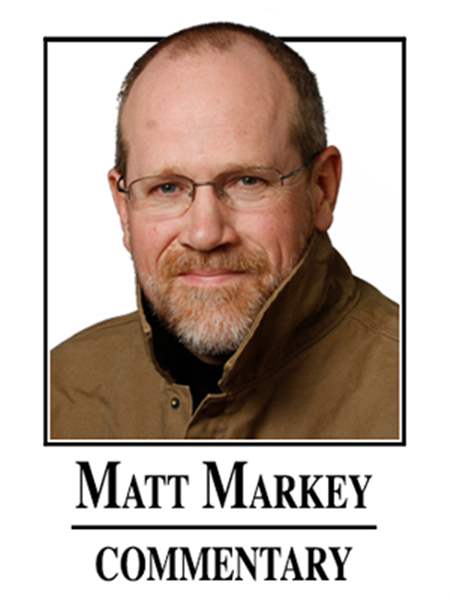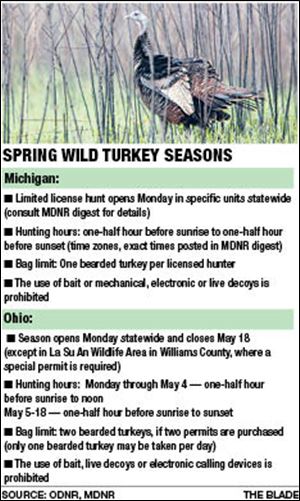
Stocking allows Michigan to once again talk turkey
4/18/2014
When the first European settlers reached what is now Michigan’s Lower Peninsula, wild turkeys were fairly common. These large birds, native to North America, thrived in the mix of hardwood and conifer forests, open meadows, and marshes.
But with the new residents living off the land and turkeys providing a good source of food, and with no management and no conservation measures in place as land was cleared for farming, the long-term outlook for the species was not good.
“Between the heavy exploitation and habitat destruction, that was it,” said Al Stewart, wildlife biologist with the Michigan Department of Natural Resources. “The last bird was shot in Van Buren County in southwest Michigan, in 1897.”
Wild turkeys were wiped out in Michigan, while suffering an identical fate in neighboring Ohio, about the same time, under circumstances that mirrored those in Michigan.
A number of efforts to re-establish these large birds took place in Michigan, beginning in 1919. It wasn’t until around 1954 that the population started to take hold again, with a transplant of wild turkeys from Pennsylvania into an area in Allegan County that had similar habitat to the birds’ home range.
The process moved slowly for a while, but picked up momentum in the 1980s when wild turkeys from Iowa and Missouri were brought in to expand southern Michigan’s wild turkey populations. Turkeys were also transplanted from southern Michigan to northern Michigan, with special attention paid to planting birds in areas where year-round food and optimum cover were available.

“Once it really became a statewide effort in restoration, it was different,” Stewart said. “The wild turkey population in most areas of Michigan was eventually restored, or expanded.”
Today, for the first time in the state’s history, wild turkeys are found in every county in the Lower Peninsula, as well as in several areas in the Upper Peninsula. In 1977, just 400 wild turkeys were harvested in Michigan during the hunting season, but those harvest figures today are at more than 30,000 birds.
“We now have a hunting season in every county, and Michigan ranks sixth or seventh in the nation in harvest numbers,” Stewart said. “Some of the best turkey hunting in the U.S. is found in Michigan.”
The spring wild turkey hunting season opens in Michigan and Ohio on Monday. Both states also have fall seasons, with limitations on the hunting areas and the number of permits issued applying in each case.
Michigan is home to an estimated 200,000 wild turkeys, and has moved from a hunter success rate of just 2 percent in 1969, to about 39 percent for the more than 82,000 hunters that took part in the 2013 season. Access to ideal hunting areas has played a big role in the improved success.
“There were more than 58,000 square miles to hunt last year, so we went from what was very limited access and opportunity to very widespread opportunity,” Stewart said.
But wild turkey hunting remains a very challenging venture. Toledo native John Zuelke, who has completed the Grand Slam, Royal Slam, and World Slam of turkey hunting by harvesting all six subspecies throughout North America — the Eastern, Rio Grande, Merriam's, Osceola, Gould’s, and the Ocellated wild turkeys, said the sport can have a tough learning curve.
“I made every mistake in the book when I first started turkey hunting,” said Zuelke, now a resident of Michigan. “But I figured it out. It can be tough on public ground, but my philosophy now is — put me where there are some turkeys and I’m going to get one.”
The National Wild Turkey Federation has played a key role in re-establishing wild turkeys in Michigan and Ohio. Turkey hunting opened statewide in Ohio in 2000, and the state has a wild turkey population estimated at about 180,000.
“These are big, majestic birds,” Zuelke said, “and when you hear that gobble, it just gets you going.”
Contact Blade outdoors editor Matt Markey at: mmarkey@theblade.com or 419-724-6068.